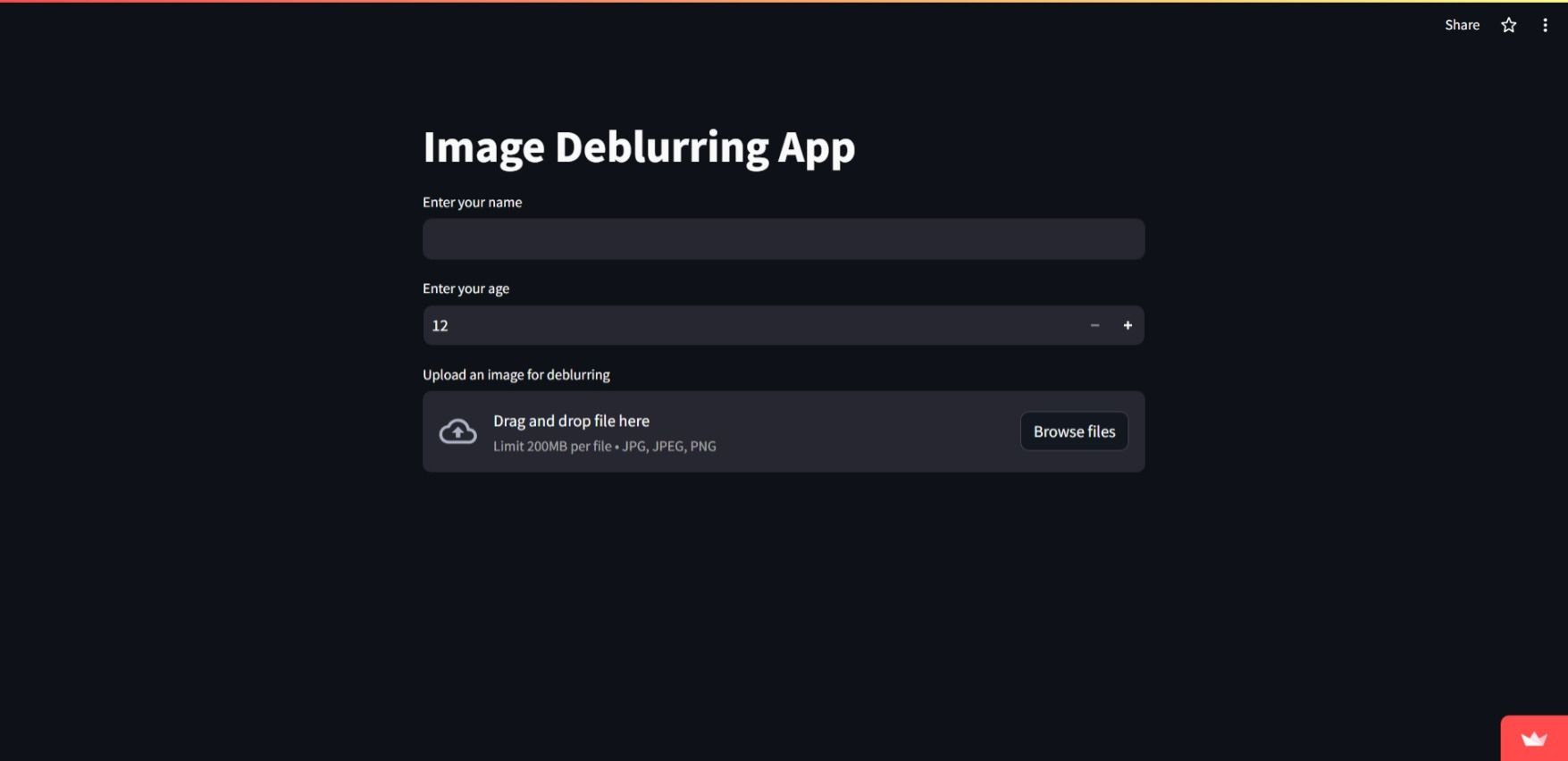
Welcome to Face Deblurring App
This application focuses on the process of face deblurring, a task aimed at restoring sharp and clear images from their degraded, blurred versions. Face deblurring is essential for improving the quality of facial images in various fields, including security, medical imaging, and digital photography. The primary goal is to recover the fine details, textures, and structures in blurred facial images, making them clearer and more recognizable.
The project employs deep learning techniques, particularly convolutional neural networks (CNN) and autoencoder models, to perform face deblurring on the CelebA dataset. By training an end-to-end model, this application estimates a clear version of a blurred image, restoring facial features with high accuracy.
Key Highlights
- Face Deblurring Task: Restoring clear facial images from blurred input images, improving facial details and textures.
- Deep Learning Models: Utilizes Autoencoder and CNN models for high-quality image restoration.
- Pre-trained Weights: The model leverages pre-trained weights to achieve optimal performance and accuracy.
- Real-time Face Deblurring: Processes images with ease, providing clearer results and enhancing image quality.
Technical Stack
- Keras: For building and training the deep learning models.
- CNN: Used for direct face image deblurring with convolutional neural networks.
- Autoencoder: A deep learning architecture used for image deblurring and noise reduction.
My Approach
The project involved training an end-to-end deep learning model for face deblurring using the CelebA dataset. The process included:
- Data Preparation: Loading and preprocessing images, including blurred and clear facial images, from the CelebA dataset.
- Model Development: Defining and building CNN and Autoencoder models to predict clear images from blurred ones.
- Model Training: Training the models on a large dataset of CelebA images with adjusted filter sizes to match the blur kernel.
- Evaluation: Evaluating the models on a separate test set and achieving significant accuracy in deblurring.
Results
After training the model, the application successfully restores blurred faces with high accuracy, offering results such as:
- Autoencoder Model: Successfully deblurred faces with 89.80% accuracy.
- CNN Model: Achieved a 78.20% accuracy in face deblurring.
This project showcases my ability to apply advanced deep learning techniques to real-world problems, specifically in the field of image processing and enhancement.
The deblurred images show significant improvements in facial clarity, making them suitable for applications like facial recognition and digital media enhancement.